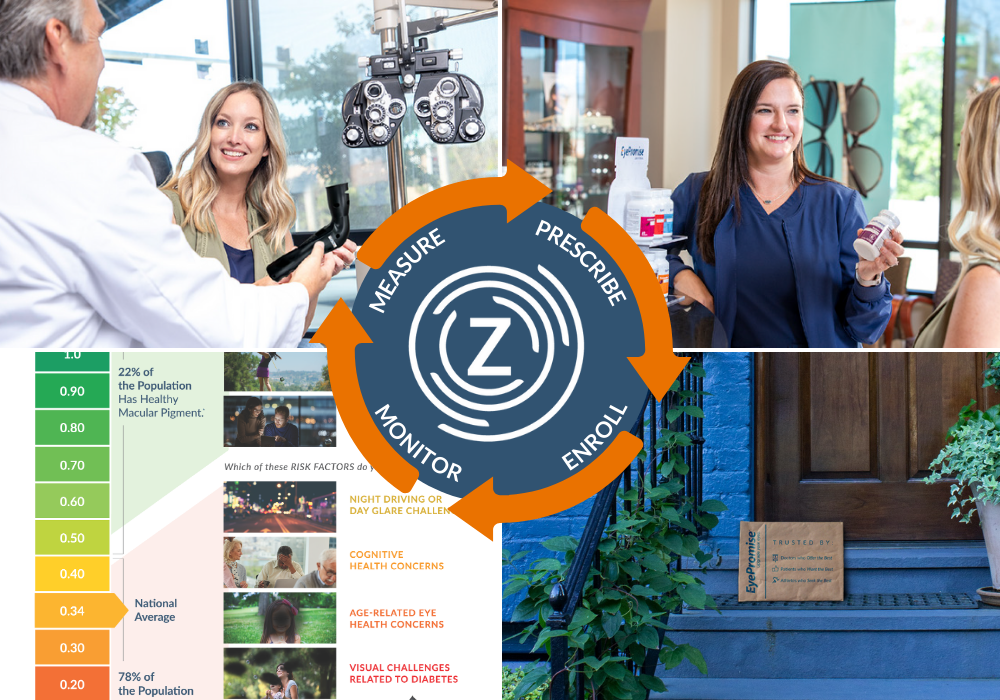How to Tell If Your Practice Is “Healthy”
Posted by EyePromise on Apr 11th 2024
As an eye care professional (ECP), you’ve been educated and trained to tell if your patients’ eyes are healthy. It’s what you do day in and day out at your office, so it’s almost second nature. However, do you know how to tell if your practice is healthy? According to business coach and educator Mick Kling, OD, in an article for Review of Optometric Business, there are 4 questions you should ask to understand the health of your business.
What’s Your Practice’s Cash Situation?
In this digital world, few people carry physical cash on them, and that’s not what we’re referring to here. In accounting, “cash” is referred to as “liquidity,” and it’s important for optometrists to have, though most have very little reserved for emergencies or other expenses. Dr. Kling recommends ECPs have between 7% and 10% of the practice’s annual revenue reserved for such instances. While this may seem like a lot of money dedicated to nothing in particular (rent, payroll, etc.), 10% only covers about 2-3 months’ worth of operating expenses.
What Outstanding Debts Does Your Practice Have (And Can You Pay Them)?

This one shouldn’t be a surprise. Of course, a business that can’t pay its bills isn’t healthy, much less successful. The ability to pay bills, especially long-term debt, is referred to as “solvency.” Dr. Kling says it’s imperative for ECPs to understand how much debt they can afford before investing in anything new. His recommendation: less than 5% of revenue should be used to pay off debt.
How to Calculate Debt Percentage
To understand your current debt percentage, you’ll need to perform a simple calculation. First, add up all your annual debt payments. Next, find your total practice revenue. Once you have those 2 numbers, divide your total annual debt payments by your total practice revenue and convert that decimal to a percentage.
Total Annual Debt Payments ÷ Total Practice Revenue = % Revenue Consumed by Debt
Is Your Practice Operating Efficiently?
Efficiency is a bit of a buzz word, especially for ECPs talking practice management. However, operating efficiency can have a huge impact on the health of your practice. To understand your operating efficiency, you first need to become familiar with your profits and losses (P&L) statement. Subtracting your expenses from your income for any given period provides your net operating income, also known as operating efficiency.
Your net operating income should be at least 25% of your practice revenue. A practice with less is most likely spending too much to operate. Some common efficiency barriers include cost of goods (COGS), personal expenses being run through the practice, and other overhead costs like marketing, insurance, or office supplies.
How to Calculate Operating Efficiency Percentage
With the help of your net operating income, you’ll determine your efficiency, but you’ll need to do some math again. Once you’ve determined your net operating income, you’ll need to divide that number by your total revenue. Then, convert that decimal to a percentage.
Net Operating Income ÷ Total Practice Revenue = % Operating Efficiency
How Profitable Is Your Practice?

This may seem like an obvious measure of business health, but many ECPs are looking at their profits in dollars only when they should be understanding it as a percentage of revenue as well. To define “profit,” it’s what’s left over after all operation costs are paid. Looking at profitability in both dollars and as a percentage helps ECPs get a better handle on expense management, as well as keep a finger on the pulse of their business. Dr. Kling says that a healthy practice should bring in around 10% or more in annual profit.
How to Calculate Net Profit Percentage
To understand profit as a percentage of revenue, you’ll need to do some division (again). First, calculate your net practice profit. Remember, this is what’s left after covering all expenses (owner/associate doctor compensation included). Once you have your net profit number, you’ll divide it by the total practice revenue, converting the results to a percentage to determine practice profitability.
Practice Profit ÷ Total Practice Revenue = % Practice Profitability
How Can an EyePromise® Partnership Impact These Measures?
As the #1 choice for ECPs and professional athletes, EyePromise nutraceuticals are trusted by experts across disciplines. Our comprehensive line of clinically backed products offers personalized nutrition for patients looking for support for age-related eye health issues, occasional dry eye, eye health related to blood sugar control issues, digital eye strain, general health and wellness, and even visual performance.
EyePromise strives to offer an all-encompassing nutritional partnership, so we’ve developed the Zea Performance System™. The Zea Performance System delivers a turnkey solution for macular pigment optical density (MPOD) measurement, nutraceutical prescription, a compliance program, and live customer support for you, your patients, and your staff. The components of the Zea Performance System reach their full potential when used together, creating a patient care continuum.
Dr. Kling and his practice partner Dr. Jason Tu utilize the program in their practice, driving an extra $100 in revenue per patient. Here’s how it works:
- Measure patients’ MPOD with the new Zx Pro™. This trusted, intuitive, and portable device directly measures the amount of protective carotenoids in the eye. This measurement can be achieved in the testing lane or in the exam room.
- Prescribe the EyePromise nutraceutical the best meets the patients’ needs. It’s best practice to keep some inventory so that patients can leave the practice with at least one month’s supply. This helps improve compliance in the long run.
- Enroll patients in the Auto Refill Program, the industry-leading compliance program that offers convenient and automatic home delivery. This enrollment credits ECPs with a signup bonus upon enrollment and referral credits for every shipment moving forward, boosting compliance and profitability.
- Monitor patients’ progress by scheduling an MPOD retest in 6 months. EyePromise nutraceuticals are the only products guaranteed to increase MPOD scores with consistent supplementation.


